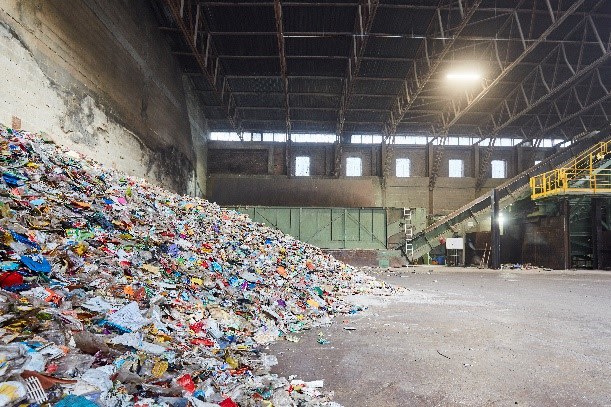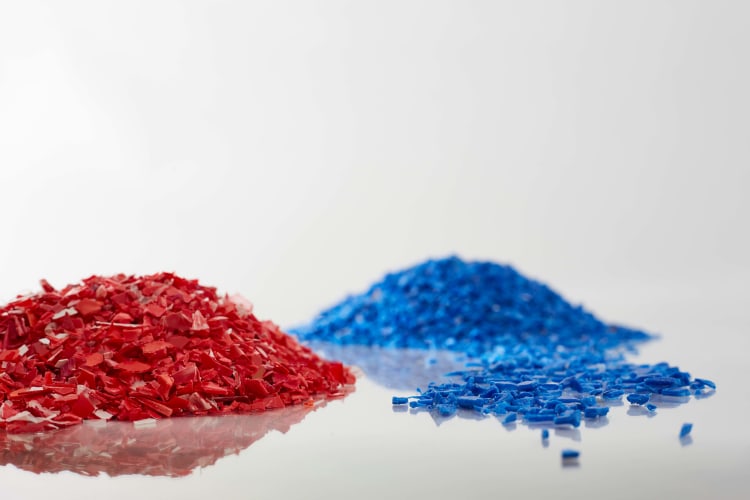High volumes of superior feedstock at hand
A plastic recycler can process more than 100,000 tonnes of polymer flakes per year, depending on market demand and material availability. With recent shortages of available materials, adaptability is key to maintaining profitable business. Waste streams and market demands are, in fact, highly dynamic. If the supply of recyclable polymers on the market is limited, but demand is high, plant operators often have little choice but to turn to more contaminated post-consumer waste to meet market demands. Exceptional purity requirements persist regardless of the volume to be processed and the type of recoverable feedstock, challenging recyclers to reach even higher qualities from increasingly more contaminated sources.Compared to other processing machinery, flake sorters are a gateway to overcoming feedstock volatility. Compact in , easy to install and flexible in operation, they prove to be a sound investment for small and large operations alike. Advanced flake sorting can process fluctuating levels of contamination without compromising recovery and purity levels. Equipped with a set of sophisticated technologies that are a fundamental part of the recycling process, they help turn low-quality input material into pure flakes that meet even the strictest quality requirements. This gives recyclers access to material that previously couldn’t be recovered, squeezing out the maximum value from available fractions.

Mixed plastic waste
A good example of creating new revenue streams is the sorting of polyolefins. Holding the lion’s share in global plastic production, the availability of PO on the market is abundant and offers a lot of potentials as the industry strives to use more recycled PO in the manufacture of high-quality products. Nevertheless, upgrading polyolefins presents its own set of challenges. Whereas PET bales processed in a recycling facility mostly consist of only one target material (PET), PO bales are a mix of two valuable materials: polyethylene (PE) and polypropylene (PP). The share of each material type in the PO infeed is hard to predict and can change with each bale. One bale could be a 50/50 mix of PE and PP, and the next could be a 70/30 mix. Irrespective of the input composition, both PE and PP flakes must be accurately identified and separated to create high-purity fractions for recycling.
Until advanced flake sorting and purification methods were introduced, the infrastructure lacked the technology to separate PP from PE cost-effectively. Less sophisticated flake sorters can solely purify one material type and remove only small amounts of contaminants, thereby often limiting their use to PET recycling plants. Furthermore, higher throughputs were hard or impossible to realize. For example, if a recycling plant uses less advanced flake sorters to process a PO bale composed of 60% HDPE and 40% PP (not considering other contaminants), the infeed would have to be sorted by belt-sorters before shredding, when the material is big enough to allow for accurate separation of PE and PP. Consequently, shredding, washing and flake sorting would have to happen in parallel on two different lines, driving up costs significantly. With the aim to operate more profitably, recycling plants would prefer to process the material in batches on a single line. The downside of this approach is a reduction in total throughput. Moreover, it remains costly due to extensive material handling, such as re-baling, storage and manpower. These are some of the main challenges impeding the upgrading of PO to higher quality recyclates.
Modern sensor-based flake sorters are a game-changing technology for the industry in the above-mentioned scenario. They are capable of detecting and accurately sorting polyolefins by polymer type, as well as separating different colors, generating multiple fractions at the same time. With the integration of the most advanced flake sorting technologies in a recycling plant, materials can be shredded and washed in a single line before entering the flake sorting process. This, in turn, eliminates the need for multiple lines or batch processing. Embracing these solutions gives recyclers access to huge quantities of post-consumer materials to create high-purity fractions of rPE and rPP.

Sensor-based sorting accurately separates red and blue PP flakes


